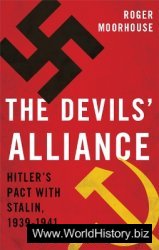As white contact increased, so did the numbers of delegations to the East. At the height of the winter season of 1857-58, approximately ninety delegates from thirteen tribes were in Washington DC. They were involved in the normal diplomatic tours of the capital, as well as in difficult treaty negotiations. One tense moment in these negotiations occurred when Little Crow, one of the Mdewakanton from the eastern group of the Sioux, doubted the promises of the government and refused to give up any more land. He was accused of acting like a child. His speech was reported in the local paper, and interpretation problems aside, his feelings were no doubt accurately conveyed when he was thus quoted:
You use very good and pleasant language, but we never receive half what is promised or which we ought to get. 1 came here about the Reserve in 1854; I recollect you [the recorder] very distinctly; and you were then writing at the table as you are now, surrounded by papers. You then promised us that we should have this same land forever; and yet, notwithstanding this, you now want to take half of it away... 1 thought we would do business... but it appears you are getting papers all around me, so that after a while, 1 will have nothing left. I am going to see that paper which you gave the Agent, and if, after examining it, 1 shall find anything good in it, I will come and see you again; and when 1 do, you will hear me talk like a man, and not like a child."
Ultimately, under extreme pressure, treaties were signed. But in 1862 Little Crow led his starving people in a massive revolt killing as many as 800 whites and taking 400 captives.
Before the Indians returned home in 1858, they were involved in the first systematic effort to photograph Indian delegations to the capital. These photographs (frequently miscredited to Philadelphia artist, A. Zeno Shindler) were taken by Julian Vannerson and Samuel Cohner of the James E. McClees Studio.
McClees, a successful Philadelphia photographer, expanded his business to the capital in the winter of 1857." He realized the importance of
Recording the Indians on film, not only for the profit he could make by satisfying public curiosity, but also to document a changing culture that was probably heading for extinction. In advertising the photographs, he claimed:
The gallery of portraits includes those of some of the principal Chiefs, Braves, and Councilors... Some of them are since dead - killed in battle. To the student of our history, as additions to libraries and historical collections, and as momentoes of the race of red men, now rapidly fading away, this series is of great value and interest."
The collection was offered as a bound volume, or as separately mounted prints. The images were 6 x 8j inches, the same size as the negatives, and could be ordered hand-colored, by the studio artists, Messrs Aubert and Kerchove."
In his advertising circular, McClees also claimed authorship of the portraits,.probably on the basis of his ownership of the studio. As a successful businessman with studios in two cities, he himself could not handle all of the photographic work. He therefore relied upon his talented staff composed of Samuel A. Cohner, a noted operator; Julian Vannerson, a former gallery owner who joined the staff as a photographer and solicitor; and C. H. Bralnard, a well-known Boston print publisher who also acted as solicitor for the gallery." The Photographic and Fine Art Journal reported:
McClees' gallery has a fine start; and well it might, for such a host of noted men in his employ are bound to succeed... Mr. Samuel Croner [sic] is the operator. Of him I have spoken before, but his pictures have improved so much of late, that I may add a kind word for him again. Some pictures that he has taken of a tribe of Indians would do credit to the first photographers in the country."
A set of prints, developed with salt, of the same portraits was circulated under the name of 'Julius Vammerson'," which suggests that Vannerson was also credited for the images.
In 1865 the Trustees of the future William Blackmore Museum in England published the 1857—58 delegation portraits without credits, and dates listed as '1850—1863'."




 World History
World History









